Carrying a gun lawfully for self-defense can make the difference between life and death in a critical situation. Yet at the same time it comes along with risks to the carrier thanks to laws and land sharks. Training can help reduce those risks dramatically.
In a perfect world (and most states), you wouldn’t need a license to carry or training in the effective use of a firearm for self-defense. Unfortunately, the world isn’t perfect and neither are we.
In the real world, mistakes happen. All it takes is a single moment of oversight, sloppy gun handling or lousy gear and you can find yourself jammed up and wearing handcuffs. Heaven help you if you have a negligent discharge or make a mistake in judgement about when to pull your gun. Make those kinds of mistakes and you risk everything, including prison.
With good training, the risks attendant with carrying and using a firearm for self-defense are greatly diminished. You’ll become an expert at gun safety and can share those skills with your family and others to make them experts at safety as well. You’ll also learn better situational awareness.
The right training will teach you body language and behaviors that will make you less likely to be “selected” for victimization by bad guys. Best of all, your odds of prevailing in a deadly force encounter will be significantly enhanced. But remember . . .
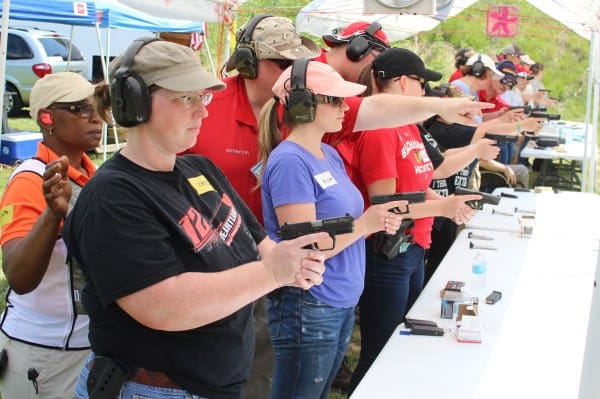
All Training Isn’t Equal
With the growing numbers of new gun owners across America, many people are looking for classes, especially those who also want to apply for a carry license. These concealed carry classes tend to be plentiful where required, and are often conducted by National Rifle Association-certified instructors. Classes run the gamut from borderline incompetent to barely adequate to well-presented, comprehensive learning programs.
As an example, in Illinois a year before right-to-carry was passed, there were approximately 42 NRA instructors who had taught ten or more people the previous year. Today, we have over 3000 Illinois State Police-approved instructors.
Beyond learning the basics from an introduction to concealed carry class, there are other programs out there for people looking for basic gun safety skills or to make themselves better shooters…everything from competition and marksmanship to hunting and self-defense.
When it comes to self-defense firearms training, easily the most common are those designed to teach self-defense fundamentals. The best of these “save your bacon” courses will incorporate all three of the following:
Mindset
Mindset is the knowledge and attitudes needed to avoid and, if necessary, survive a confrontation. This includes the mental preparation for dealing with all aspects of a violent encounter at home or in public…and to never give up in a fight for your life.
This particular aspect of training emphasizes conflict avoidance, layering your defenses, and knowing the legal standard by which you will be judged for using lethal force against another. A well-taught class will help you avoid trouble through situational awareness and conflict de-escalation, and also keep you out of jail for inappropriately introducing a weapon – firearm or otherwise – into a situation.
Functional ability/training
Functional ability training consists of knowing how to make your gun work, the ability to use it safely and effectively, and the associated aspects of your gun’s proper care and feeding.
Any reputable course will inculcate you with basic firearm safety. Exercising proper muzzle discipline and keeping your finger off the trigger until you have decided to shoot should be as natural as breathing. Sadly, for those without formal training, poor muzzle control and trigger finger discipline are the norm.
Gun selection plays an important role as well. Some folks may have compatibility issues with a gun they like, making it a bad choice for them. If you can’t manipulate your preferred gun, then you should find another one. Arthritis, hand strength, or other physical limitations are common causes for these issues, but so are a lack of familiarity with a firearm’s controls.
Good schools will steer you away from poor gun choices without making fun of what you may already have. Just because you thought the Beretta 92 looked really cool in Lethal Weapon doesn’t mean it’s a good carry choice for you.

Tactical training
Tactical is not “tacticool” where people dress up in tactical bro gear and pretend they’re something they aren’t. Instead, it’s the practical, hands-on study of the tactics needed to avoid conflict or, failing that, to fight with your personal defense tools.
This includes learning the effective use of cover and concealment, proper presentation of the gun, situational awareness, proper force “application” strategies, malfunction clearing procedures, reloading techniques and so much more.
Reading a book or watching a video helps and can serve to introduce these concepts, but there’s no substitute for doing it yourself under the tutelage of a skilled instructor who will ensure you’re using good technique and minimizing wasted movement. This allows you to act quickly and decisively, without “thinking” about the mechanics of what you’re going to do once you’ve decided to act.
The old saw that ‘you don’t rise to the occasion, you fall to your level of training’ is pretty much true. Indecisiveness, wasted motion and/or poor skills seldom win competitions or gun battles.
Finding a good course
Better, more enjoyable courses will share many common attributes. Here’s how to find for them and some attributes to seek out.
Research the instructor/school. Start with their website. Pictures will often tell the tale of how many people they’re training and how they do it. Is poor muzzle control or other questionable safety issues shown in the pictures? I’ve seen images of everything from people shooting inside a pole barn without proper ventilation to people walking in front of other shooters on an open range. If it’s the same three “students” in all of the photos, that’s a clue. If there are no photos, that should be a clue as well. No website? Why not?

Call and talk with them. Speak with the instructor ahead of giving them your money. Ask them any questions you might still have…anything from describing their previous experience, to inquiring about accommodations for those less-mobile or otherwise disabled. Ask them about how many instructors will be present and the expected ratio of staff to students. Ask them why they became a firearms instructor. Good teachers should have good answers for your questions.
Look for experienced instructors. While everyone has to start somewhere, previous instructional experience measured in years — not months — will usually lead to a better end result for you, the consumer/student. If prospective instructors try to dazzle you with their experience in the Boy Scouts, ROTC, or “personal interest,” look out.
Look for instructors who have continued their education especially if they’ve been to some of the nationally-known schools. They will most likely bring lessons and techniques they’ve learned from the nationally-respected masters to your local class.
Instructors who carry Do the instructors themselves carry every day, or are they just teaching theoretical concepts to their students?
“Team teaching” is a good thing, as instructors can teach to their strengths and students enjoy hearing a more diverse set of perspectives. The end result is usually a better educational experience for the students.
A team of instructors also offers greater opportunities for the student to get more one-on-one help as needed, particularly on the firing line during live fire or in other practical aspects of the class.
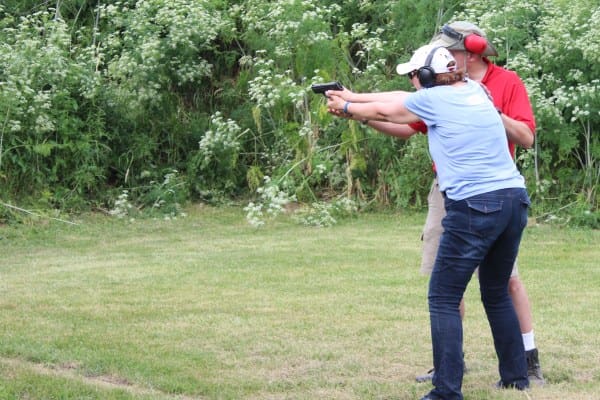
Previous law enforcement or military instructional experience is a bonus. Again, it’s about bringing applicable aspects of the latest tactics to the class. I’ve been teaching for two decades and seen first-hand that “military” and “police” listed in someone’s credentials, while a net positive, doesn’t necessarily mean a lot when it comes to teaching new skills to new shooters.
Your class isn’t (or shouldn’t be) a boot camp or police academy. What matters is instructors’ ability to communicate with everyday people, teaching and empowering them with the skill sets they need to avoid becoming a statistic in the real world.
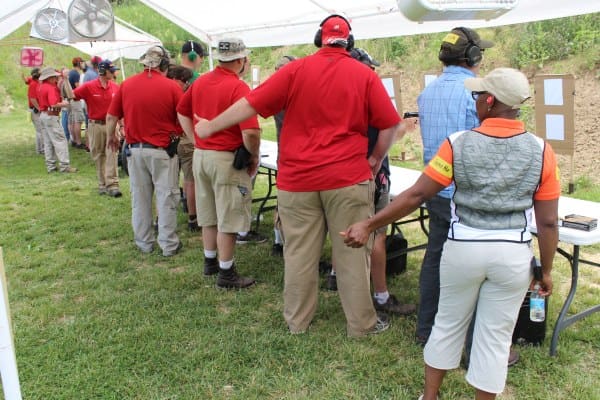
High instructor-to-student ratios. I can’t stress this one enough, especially for range exercises. If you have one or two instructors trying to run a range with ten or twelve entry-level students on the firing line at once, you’re getting badly short-changed as a student and it’s not as safe as it could be.
Ability to communicate with everyday people outside of the gun culture. Do schools try not to use jargon and are they willing to spend that extra time (and do they have the staff to do so) to work with new shooters, including women and children? Are they there for those who are a little slow at absorbing the subject material?
This one’s harder to assess outside of personal referrals or recommendations, but it’s especially important if you’re a novice, the lone woman in the class or you’re bringing your kids.
Courses that offer more than the minimum. Good instructors won’t cut corners, but in fact will supplement the minimum required material with valuable and useful (not to mention life-saving) information they’ve learned from other schools or instructors.
Loaner gun availability. Do they have loaner guns for folks who come with inappropriate or malfunctioning firearms, especially for basic firearm/home defense/CCW-type courses?
Sometimes they might even have an armorer on staff, but usually just having a loaner gun and gear (holster, ammo pouches, etc.) will be very helpful. You might have to pay a nominal fee, but loaner availability is a big plus.
Referrals, testimonials, and word of mouth are all things to look for in reputable, experienced instructors. Ask your friends who have been to a class what they thought of it. Visit your local gun club or gun rights organization and ask those present for recommendations on instructors and/or classes.
Red flags
With booming gun sales and more demand for firearm training, there are a lot of instructors — especially newly-minted ones — who vary significantly in skill, ability, and ethics. There are some red flags you can look for in entry-level training to help you avoid a disappointing experience.
Unsafe gun handling: Do instructors demonstrate safe gun handling or do they routinely put their cotton pickin’ finger on the bang switch inappropriately? Are they careless about muzzle control or are there not enough of them to police muzzle discipline of untrained/careless students?

Even worse, do they stand downrange while students are shooting or handling their guns? If you see any of this, the first step is to bring those concerns to the staff. If these problems go unaddressed, it might be a good time to pack your bag and walk. Training-related accidents are very rare, but if those running classes are lackadaisical about safety, it’s time to make yourself scarce.
Internet classes: Do instructors attempt to “teach” the classroom segments of the class via the internet? In general, that’s sub-optimal. Given social distancing and limits on the number of people in indoor spaces, that may be done more frequently these days.
Cost: Expect to pay a little more for experienced instructors with solid reputations or classes in big cities where range space is at a premium. But any course that’s advertised for dramatically less than the normal market rate for similar training from similarly-credentialed instructors is a big red flag.
Example: If a hypothetical CCW class goes for $200-250 at most locations and someone’s advertising theirs for $50, beware. Find out why it falls so far outside the norm.
Charging for free items like license application packets: One firearms training group in Illinois charged students $20 each for Florida and Arizona license application packets, even when those respective states send them out to anyone for free.
Cutting corners to do less than the minimum requirements: If it’s supposed to be an eight-hour class and the instructor finishes in six hours, that’s not good. In fact, it may constitute fraud in state-mandated CCW classes depending on local laws.
“Instructors” who haven’t had training: If the only formal training your prospective instructor has had was their “instructor certification” class, that’s cause for concern. Good firearm handling skills and knowledge of self-defense, personal protection, and the judicious use of deadly force don’t come from on high. They are learned.
Instructors teaching flawed, out-of-date or just plain unsafe information: That could get students killed or injured, either from tactical or a safety perspective. Example: “You should carry your gun with an empty chamber and rack the slide on your pants.”
Courses that are unrealistic: Do they teach you to hang upside down out of a pickup truck, firing one-handed under the door? Do they teach you barrel rolls while you hold your gun? Pack your gear and run. Worry about a refund later.
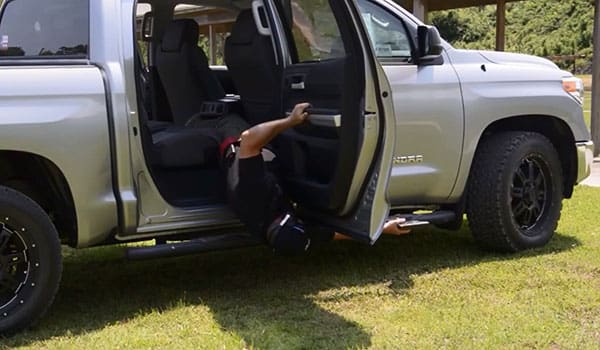
Things you can do to make your training experience better
- Come bright-eyed and bushy-tailed. Get a good night’s rest. Leave the drinking and nightlife alone the night before.
- Come with an open mind. Leave preconceived notions behind along with your man-card if you’re a guy. If they teach you something new, try it. You can always discard it later.
- Dress appropriately. Wear closed-toe shoes, long pants with a belt, and bring along a baseball cap or similar. Ladies, leave the low-cut shirts at home. Also bring rain gear or extra clothing for unseasonably cool weather.
- Bring your own eye and ear protection. Bring sunscreen and bug spray, just in case.
- Hydration should be provided by the class sponsors. Hydration is a safety issue, but bring some of your own just in case. Avoid caffeine as it contributes to dehydration.
- Bring lunch, as necessary along with any medications or other personal needs.
- Bring your gun, gear and the required amount of ammunition, minimum. Check your gun and gear before the class. If a family of dust bunnies has taken residence in the barrel, clean it. If it’s filthy, clean it. If your ammo dates from the Spanish-American War era, looks corroded, or the lead has turned white, buy new ammo.
- Bring a backup gun in case your front-line gear goes down, especially for intermediate and advanced classes where you expect to shoot a lot. Ditto for any gear you know you’ll need.
- For rifle classes (or if you have a fancy optic on your pistol), come to class sighted in. Bring spare batteries for your holographic sights and a sling for your long gun.
- Bring a notepad and pens.
- Read the recommended gear list and follow those instructions.
- Turn your phone off or on completely silent mode before class starts.
- Everyone’s a range safety officer. If you see someone doing something unsafe, ask them to stop. Report any safety concerns to the instructor(s) right away.
- Address any concerns or questions you might have privately before class or during breaks where possible. Don’t tie up class time.
Do your own research
There’s no need to settle to waste your hard-earned money on a course that will disappoint you. Use the information contained here to help guide your course selection. It’s not that difficult to find training that meets or exceeds your needs instead of settling for a marginal offering that falls short.
Life is precious, training is cheap
Remember, training is inexpensive compared to your life and the lives of your loved ones, so it’s not a place to cut corners. Good training that allows you to avoid becoming a victim and come out on top is truly priceless in the long run.

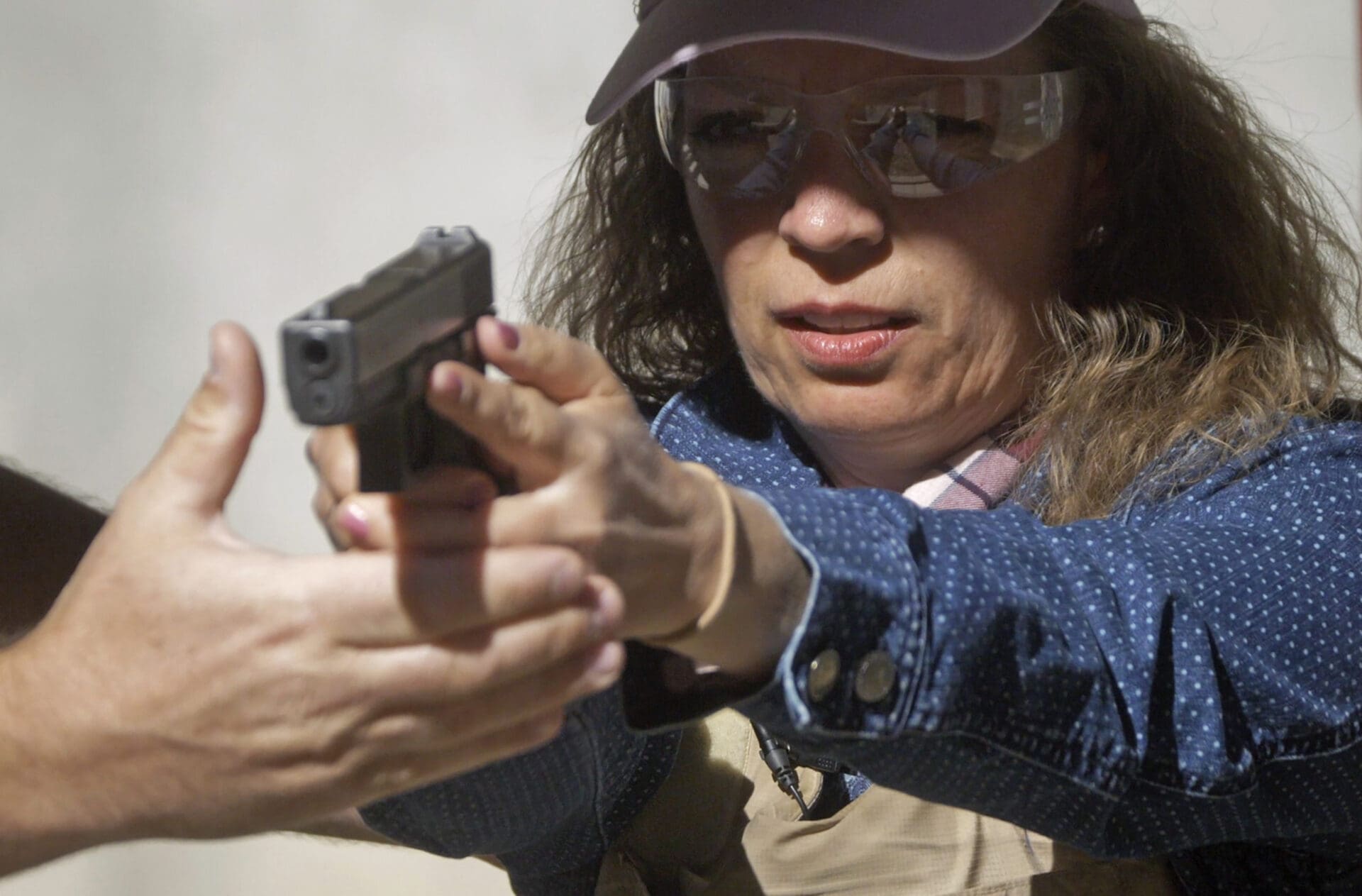
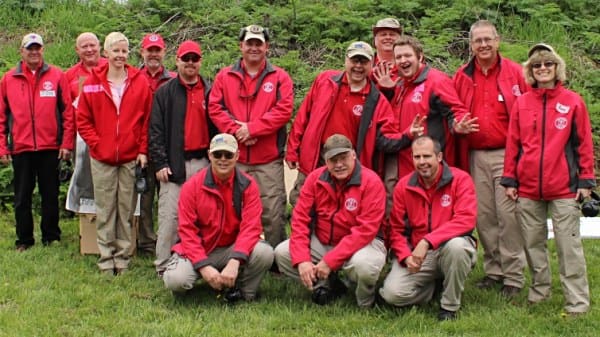




Wow ILLannoy State Po-leece “approved”! The same stasi tasked to arrest us naughty scofflaws who fail to register our verboten gats January 1st? I have a few stories about your buddies. None good🙄
An ill noise indeed.
It’s a crapshoot. There really is no reliable way to determine if any given firearms instructor is any good nor know if what they are teaching is total bunko. NRA certification is a joke and there really is not any reliable civilian training certification that means anything in substance IMHO
There are law enforcement training certification programs but Law enforcement tactics are not exactly congruent with civilian self-defense standards and training to police standards may be sub-standard in the first place and also could be a huge mistake if you learn inappropriate tactics and decisionmaking which can get you into huge trouble in a court of law as a civilian involved in a self-defense shoot.
In theory training should be a good thing. The difference between theory and practice is that in theory there is no difference….
It has been my experience that in states where there is a training requirement for CCW, depending on the instructor and the law, such courses may range from a mere formality (the instructor doing the teaching and giving answers during the classroom ‘written test’ phase and a number of shots on steel in the range phase), to an in-depth intensive classroom phase with clear concise instruction, then extensive range instruction culminating in a live-fire test.
These variations can be good or bad, depending on whether one is a first-time gun owner or a highly experienced shooter, and the type of course or instructor being matched with the student. I am extremely opposed to mandatory training by statute, but a huge supporter of training for all gun owners and their experience levels. Some people are so poor they can barely afford a gun and ammo, let alone professional instruction; should they be denied their 2A right? God forbid! Let all peaceable Americans be armed, but exhort for good training for all. Let organizations such as USCCA and training companies such as Gunsite offer training packages matched with gun owners’ experience without government involvement.
That being said, the government at both state and federal levels could offer subsidized training programs to ‘members of the unorganized militia’ as part of the Constitution’s mandate in Article 1, Sec. 8. The CMP is a great start, but there are millions of gun owners who know nothing of the CMP and it would be IMHO good for taxpayer dollars to be spent on standards & instruction, plus awareness (advertising) for these programs. It would insure quality instruction (above anything the NRA has done) at an affordable cost to student gunowners.
One could dream, at any rate. First, we need to fully restore our 2A rights through pro-gun legislative and judicial action!
You would be very lucky to find a firearms instructor who was willing to train you in the proper use of revolvers.
Most trainers are shills for the gun industry. In that they only promote a certain kind of firearm. For
you to own and use for self-defense.
And many will tell you only a 9mm or a 45acp was good enough for self defence.
You aren’t wrong.
Check out Thunder Ranch in Oregon for a great revolver class.
If their only accreditation is via the NRA…run. If it’s via USCCA…run really fast.
“Illinois State Police-approved”
BREAKING NEWS! Preliminary injunction against enforcing California Sensitive Places Ban!!
2A Groups Unite To Challenge California’s NEW 1984 Orwellian FFL Law.
Is Illinois Complying With It’s Gun Registry? A look at some updated data on how many Illinois residents are complying with the registration requirement.
Good info here. The biggest issue I see with “trainers” is just that, most are just trainers with not much street or military experience. They may be able to teach basics/fundamentals but when the grease hits the skillet, I want someone who has been on a “two way firing range” teaching me.
It depends on the training type.
If its just basic firearms familiarization and use – it doesn’t take a trainer with “street or military experience” although it might help but for the best effect you want a no-nonsense skilled experienced trainer for basic firearms familiarization.
If its tactical training though, that’s a different thing and you want someone with actual in depth hands on training and experience with the tactical “two way firing range” world. I got my tactical training from a retired Navy Seal (along with some of his other currently still serving and retired) Navy seals and other military that volunteer/provide their time to provide training at the range, who have actually ‘been there and done that’, and without that training my wife and I would most likely not be alive today
Then there are the ‘cool ninja operator’ trainers like the guy hanging out of his truck door in the pic in the article. There is a link to a video for that pic…. this guy > the type of ‘trainer’ you absolutely want to keep away from … his video as linked in the article is below. They should have entitled this video “How to become a statistic and look like an idiot while doing it”.
Blew a couple shots, and those couple of shots flew down the street and killed Grandma and the dog she was holding.
If deys ain’t a-teachin’ hows to bank shots into the baddies they ain’t worth a spit as instruckturz.
“1. Come bright-eyed and bushy-tailed. Get a good night’s rest. Leave the drinking and nightlife alone the night before.”
Come bright-eyed and bushy-tailed, yes. But “… Leave the drinking and nightlife alone the night before” is wrong if you frequently engage in “the drinking and nightlife” (where frequently/frequent means in this case, at a minimum, twice a week and have been doing it for a long time like that – no I do not mean alcoholics).
If you are ‘frequent’ (as defined above): You want to leave the “the drinking and nightlife” behind for at least four days before you attend the training to help ensure your body and mind is “bright-eyed and bushy-tailed” for the training. People who frequently (as defined above) engage in “the drinking and nightlife”, although you may not physically seem to be suffering the effects of alcohol and body stress’s, even if you can get up and go to work fine the next day and don’t have a hang over or other physical effects, you are actually not as “bright-eyed and bushy-tailed” as you could be. At the nerve system and concentration level (which can affect reaction time), and also it can slightly affect your eye sight vision and its reaction time under some lighting conditions, you are still affected for five days minimum after you interrupt that frequent pattern. Just because your body may seem rested and the alcohol has metabolized out of your system and you seem fine it does not mean your body is completely ‘detoxed’ free of all the effects of frequent “drinking and nightlife”. So in the case of frequent, the night before is not enough time to be as “bright-eyed and bushy-tailed” as you could be for the training.
correction for : “…you are still affected for five days minimum after you interrupt that frequent pattern.”
should have been …
…you are still affected for four to five days after you interrupt that frequent pattern.
If I dont have 750ml of vodka and a couple beers in the morning my hands shake.
“So in the case of frequent, the night before is not enough time to be as “bright-eyed and bushy-tailed” as you could be for the training.”
All the more reason to banish Demon Rum from the nation. We POTG need to rally behind the movement to pass a constitutional amendment making all alcohol drinking illegal. Since “booze” requires a tax stamp, we could enlist the Treasury Department as the enforcers.
This is so simple a thing to do, why is it I am the first to lay it out?
You aren’t “the first to lay it out” — this particular social experiment was done years ago. Since you have obviously never studied history apparently you don’t realize that everything you are suggesting was done — and was a spectacular failure.
The Eighteenth Amendment to the United States Constitution established the prohibition of alcohol in the United States. The amendment was proposed by Congress on December 18, 1917, and ratified by the requisite number of states on January 16, 1919. The Eighteenth Amendment was repealed by the Twenty-first Amendment on December 5, 1933. It is the only constitutional amendment in American history to be repealed.
“You aren’t “the first to lay it out” — this particular social experiment was done years ago.”
May I suggest you are possibly over-thinking my comment?
That’s dumb. If you’re going to a driving school do you want an instructor who has crashed his car? Avoiding a fight or a crash is the most successful training. Situational awareness, avoidance, de-escalation, communication – all powerful things that can be learned and taught without a “two way firing range”.
“all powerful things that can be learned and taught without a “two way firing range”.”
You didn’t understand what he was talking about. The “two way firing range” thing was in reference to ‘actual real world experienced’ not that your training needs to be taught on an actual “two way firing range”.
I’d be weary of the super-hooah operator types. Last thing you want is the instructor spending 8 hours straight telling the class what a badass he is and when he was “knee deep in the suck, eyeball to eyeball with al Qaeda.” Chances are if he served at all, he was a Chaplain’s Assistant. Nothing against them necessarily, however, they tend to be terrible Soldiers, have inflated opinions about their status, and ZERO military bearing or skillset.
What Is The 21 Foot Rule?
This was a very good article with some great advice, especially about the quality of instructors. Just because a firearms instructor was former military or law enforcement doesn’t make them good teachers. Also, just because someone is an excellent marksman doesn’t make them good at teaching others good firearms handling skills. Be very selective in choosing whom you hire to teach you how to safely and effectively handle a firearm, especially for self-defense purposes — your life will depend upon it.
If you want, and feel you need, specific training to handle a self-defense firearm then, by all means, seek out such training. I have to say, however, that guns, handguns in particular in this case, are not that incomprehensible a thing. Knowing which end the boolits exit and how the trigger, and by extension, the action, works is not a lot of knowledge to master. Learn a bit about sights and, well, your pretty close to where you need to be for the average, never gonna fire it in anger, gun owner. Guns are inherently ergonomic objects, made to be held and employed by wide swaths of humans and, while dangerous, not complicated. Don’t point the gun at something you don’t want to shoot and don’t pull the trigger unless you intend to.
I was a boy of 7 or 8 years when I was taught the ins and outs of a rifle and still shy of 10 when handguns and shotguns were placed in my hands. If you want to pay someone to train you to use a gun, go ahead but, many could benefit just about as much from some old friend or family member who knows a bit about firearms. Learn, remember and understand the four rules, buy some ammo and get some practice with your gun(s) and don’t concern yourself too much about becoming a Navy Seal is, generally, my baseline advice.
“….don’t concern yourself too much about becoming a Navy Seal is, generally, my baseline advice.”
Maybe in this day and age, gun owners should be schooled in small unit tactics, especially how to be a two person fire team.
I would include training in combat concealment, ambushes, booby traps. Of course, training in how to gather and prepare wild life as food sources, along with how to acquire and detoxify water. Learning how to capture and employ a range of weapons such as grenades, rocket launchers, anti-vehicle weapons, and land mines might be good as force multipliers. Combat first aid is a must, but obtaining and controlling captives can be ignored…they only take up space and food.
If a person hasn’t mastered the above, they are not seriously well trained, or well armed.
Good that you included food and water. An army marches on its stomach.👍
“Good that you included food and water. An army marches on its stomach.”
Was going to leave those out, as I thought it a given, but then decided some noobs might not think of it.
Noobs talk about tactics. Old heads talk about logistics.
True then. True now.
Something tells me that your typical 34 year old suburban housewife is not gonna go down this road. Good luck even teaching one to field dress a small deer. Most prototypical suburban housewives, however, have it well within their capacity to learn to handle, carry and employ a compact 9mm.
Are all these things skills that could be valuable? Sure, no question, but, about 329,000,000 of the 330,000,000 people in this country aren’t going to choose that path.
“….about 329,000,000 of the 330,000,000 people in this country aren’t going to choose that path.”
It was just a spoof on the cohort who insist that one must be prepared for all the worst-case scenarios, in order to be considered competently prepared/armed for self-defense.
@Sam
Gotcha. My sarc-o-meter must need calibration.
My sarcasm detector is in the shop, so I can’t tell if your post was meant to be satire of the many really stupid classes available teaching the skills you mentioned or if you really are one of the wannabe mall ninjas to take such courses.
“My sarcasm detector is in the shop, so I can’t tell if your post was meant to be satire of the many really stupid classes available teaching the skills you mentioned or if you really are one of the wannabe mall ninjas to take such courses.”
‘Tis a conundrum, isn’t it? Sometimes not certain, myself.
@MyName December 22, 2023 At 03:29
“@Sam
Gotcha. My sarc-o-meter must need calibration.”
Takes two to communicate; I might have been too clever, by half.
Once again, the ever incompetent writers(if you even call copypasta news articles that) forget one of the most important things; contingency plan. If the instructor never goes over a contingency plan if there is a training accident at the beginning of your course, get out of there ASAP and ask for a refund!
Comments are closed.